We tested five of the world’s best wine glasses to figure out what separates a $5 glass from a $50 one.
If you’re skeptical of those articles that claim to have the “Best Wine Glasses for 2018,” then this deep dive is for you. You’re right to suspect there’s more to glassware than good Amazon reviews.
In This Article
- What are the best wine glasses, and why?
- What aspects should you pay attention to when buying wine glasses, regardless of price?
- If you prefer red (or white) wines, what glass traits should you look for?
We Tested the World’s Best Wine Glasses
… and here’s what you need to know
Wine Glass Selection
We held off on making this video for several years because of the selection process. Why? Learning how to assess glasses takes a lot of experience. Over the years, I’ve tested close to a hundred wine glasses and have about a dozen or so favorites.
I chose these glasses because they represent the best of the best. Additionally, they are universal glasses, as in, they can be used for any style of wine (red, white, rosé, or sparkling). Finally, despite their fragile appearance, they are all dependable and should hold up to everyday use.
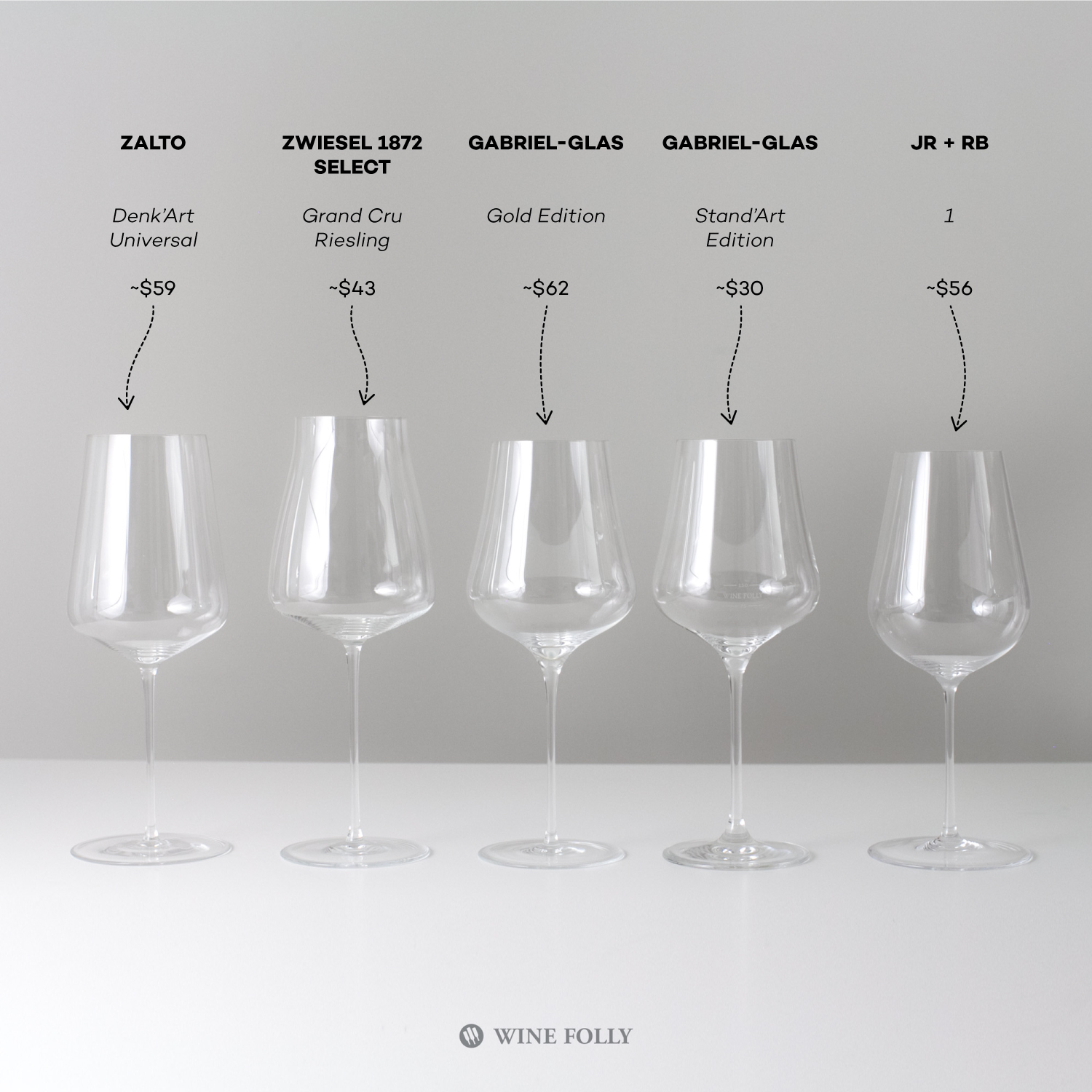
We tested:
- Gabriel-Glas “Stand’art” Universal Glass
- Zwiesel 1872 Select “Riesling Grand Cru”
- JR + RB “1” Universal Glass
- Zalto “Denk’art” Universal Glass
- Gabriel-Glas “Gold Edition” Universal Glass
While collecting glasses, we were delighted to get our hands on the newly launched Jancis Robinson + Richard Brendon “1” collaboration. If you don’t know her, Jancis Robinson is one of the world’s foremost wine critics. So, this particular glass comes with a lot of built-in street credit!
Which Glass Won?
Naturally, it was impossible to pick just one. We chose two!
- Zalto “Denk’art” Universal Glass
- Gabriel-Glas “Stand’art” Universal Glass
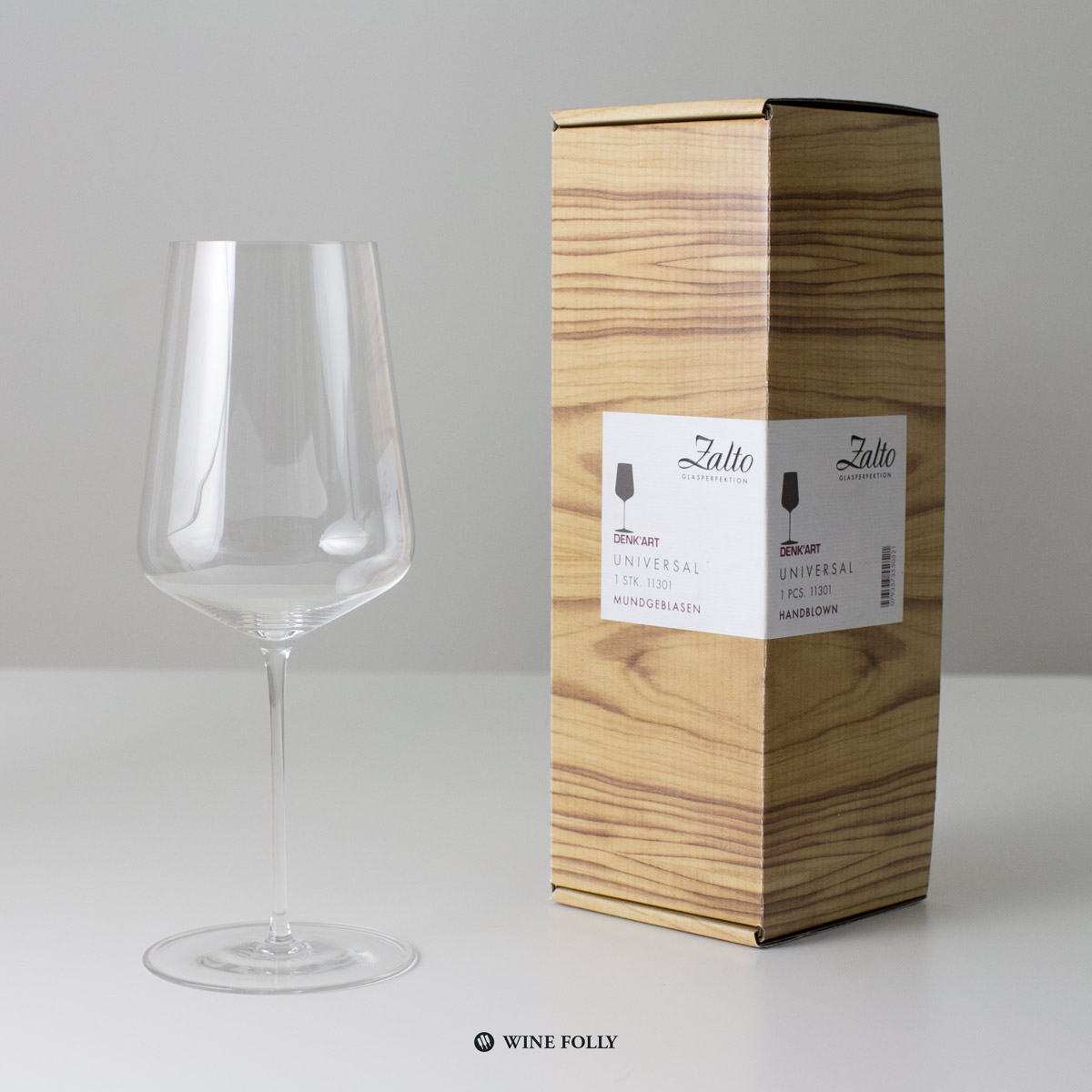
Zalto “Denk’art” Universal Glass ($59)
Stands up to the hype.
When you watch the video, you’ll note I was very skeptical of this glass because it comes with so much hype. That said, I was truly impressed with Zalto, especially for what it does with red wines.
Why: I felt compelled to choose Zalto because it delivered the sauciest fruit flavors, while still maintaining a balanced palate. Since so many wine connoisseurs prefer red wines, I think the fruit-focus in this glass is highly desirable.
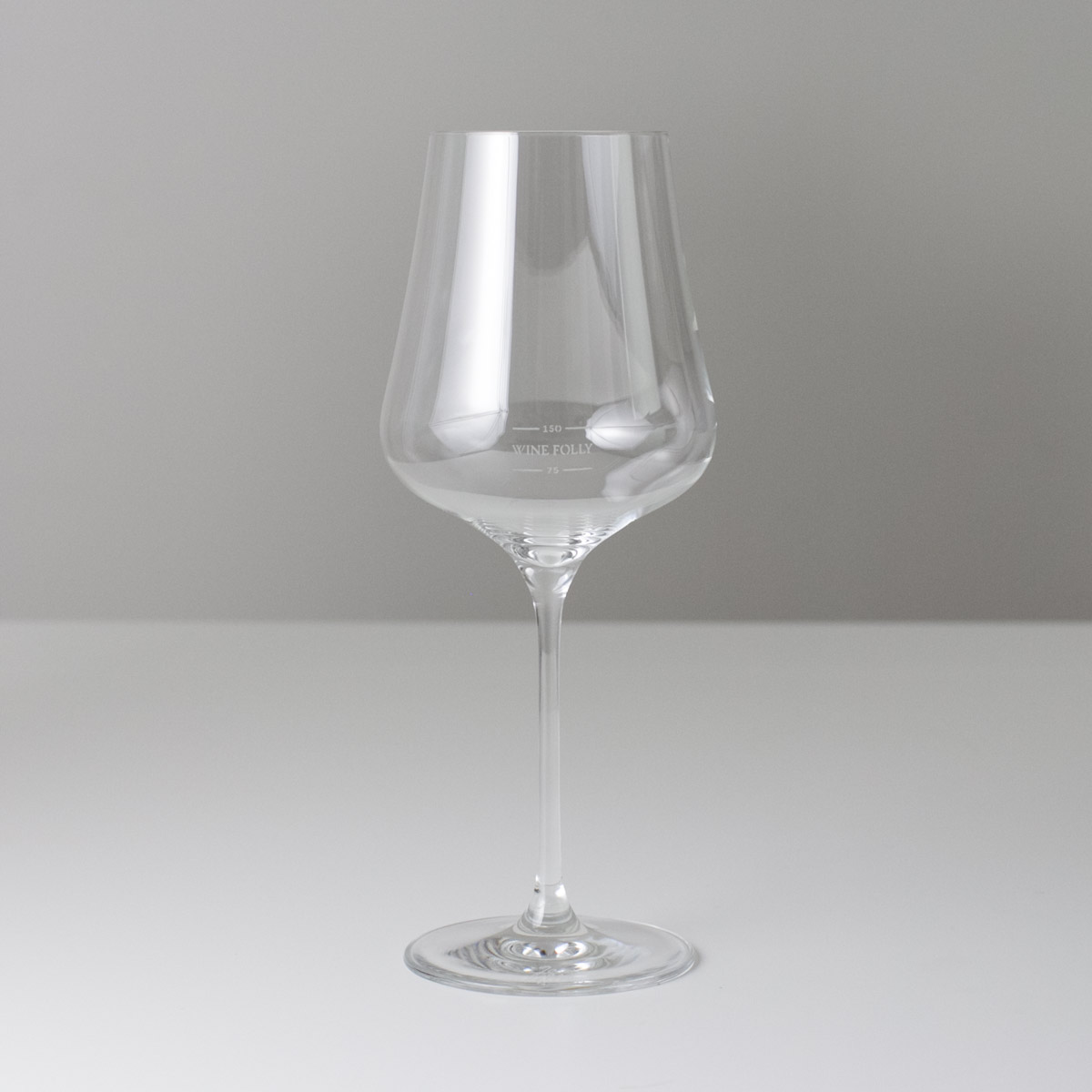
Gabriel-Glas “Stand’art” Universal Glass (~$29)
Overperforms for the price.
I was shocked at how well this machine-made glass did alongside glasses that sell for over two times the price. Besides the taste test, I’ve personally watched a tasting room attendant drop one on the floor, and it didn’t break–it bounced!
Why: What I liked about this glass was how it sequentially delivers flavors. This trait makes Gabriel-Glas glass fantastic for blind tasting and for improving your palate. The fruit delivery was equal to Zalto but more fresh in style.
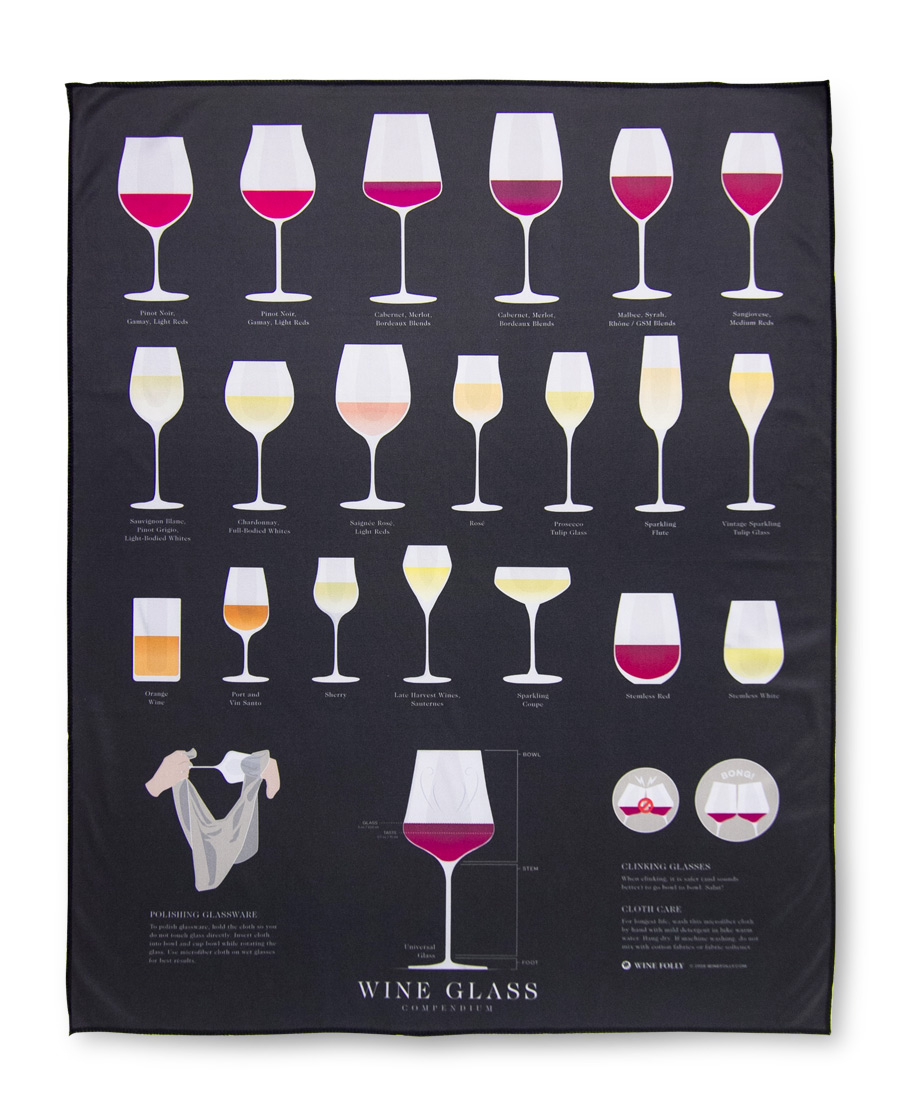
What to Pay Attention to When Assessing Glassware
In the video, I mention a few key things to pay attention to:
- Crystal vs. Glass: I’ve seen wine glasses available in glass, crystal glass, and borosilicate glass. Unless you’re buying affordable glasses (under $9 a stem), then you’re best bet is crystal (mineralized glass). Crystal glass comes in variable quality levels and types.
- Opening Diameter: This trait really affects the aroma presence of wine. In the video, I had some quips about smaller diameter openings for red wines because of how much it shoveled the aromas into my nose (the burn!). 2.25 inches was tight for reds but ideal for whites. 2.5 inches was about right (both Zalto and Gabriel-Glass were around 2.5). Finally, my “old standby” restaurant series Riedel Extreme Cabernets have a diameter of 2.75.
- Glass Shape and Size: Most importantly, you need enough volume in the glass to collect aromas. Read more about glass shapes and why they matter.
- Rim Thickness: Less material is generally considered better. Some value manufacturers just cut the lip and file it smooth. Avoid these. We’ve been very impressed with the quality Riedel puts out and use it as a good baseline.
- Multi-Piece: Most glasses are made with multiple pieces. The high-end models are not, which is why they are so much more durable despite how fragile they look and feel. Still, there’s nothing wrong with being multi-piece, make sure they get the seams off. (You can feel the seam on the stem.)
- Bowl Clarity: One thing I noticed on all the hand blown models was an amazing clarity. Many machine-made glasses will have slight ribbing on the bowl, and it distorts light. It doesn’t affect the taste, but it’s one of those things you notice when looking at quality.
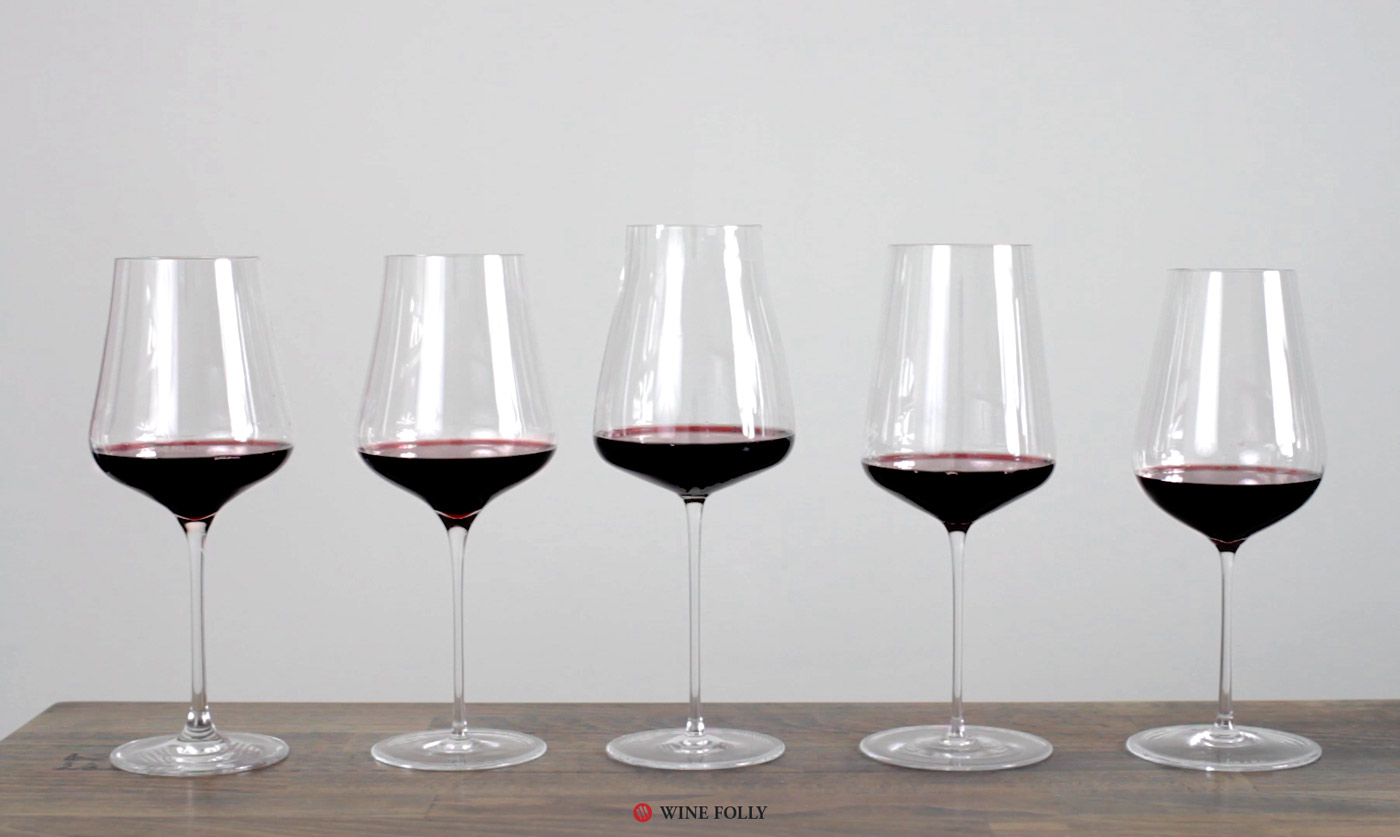
What to Expect to Spend
It’s hard to find exceptional glassware for under $20 a stem.
Under $20 a stem, you’ll do best with larger glass manufacturers such as Stolzle or Schott Zwiesel. You’ll notice these glasses are all multi-piece, with beaded lips, ribbing, and seams on the stem, but they do have the right shape!
NOTE: If you want to know more about glass shape, read this great article about what shape to choose based on your taste preferences.
Higher-end glasses go for $20 and up.
I’ve been consistently impressed with Riedel. The Veritas “New World Pinot Noir” (~$23 a stem) is fantastic. The downside is these glasses aren’t universal.
This was why I was so tickled pink with the Gabriel-Glass “Stand’Art” Edition glasses (~$29 a stem). These glasses offer great value and would work well as a universal glass.
Then, at the top-end of wine glasses, there are many options. We loved Zalto and Gabriel-Glas, as we mentioned above, but could come up with reasons to love each of the glasses we tested.
NOTE: When speaking to glass manufacturers, I was surprised to learn that hand-blown glasses take substantially longer to produce. A production facility can whip out 30,000 machine-made glasses in a week compared to just 5,000 hand blown glasses.
